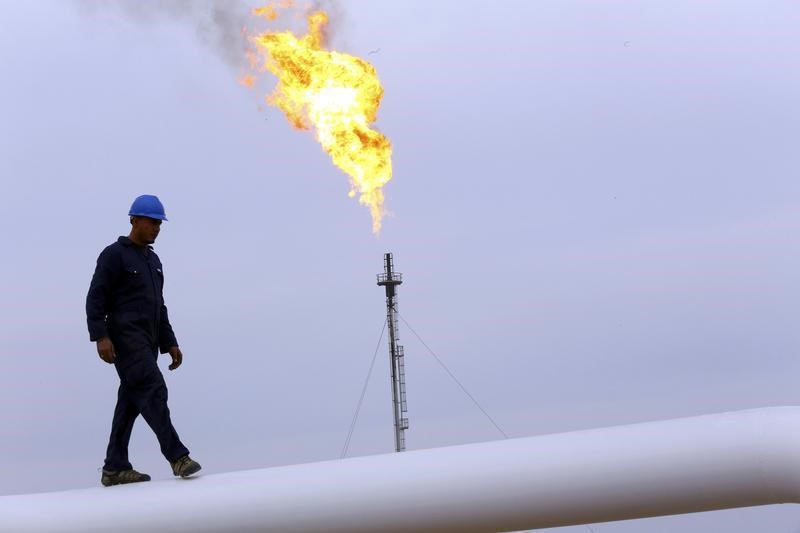 © Reuters.
© Reuters.
By Barani Krishnan
Investing.com - From an unloved market, U.S. crude has turned into something oil traders can’t seem to get enough of.
West Texas Intermediate, the benchmark for New York-traded crude futures, has gained 65% since Tuesday’s settlement, rising like a phoenix from the ashes of Black Monday when it fell 126% to sub-zero pricing amid demand busted by the Covid-19 pandemic.
Minus the epic percentage moves, WTI was, of course, nowhere near its old self, trading almost $45 below a barrel below where it began the year.
“We need to take this rally with an ounce of caution … make it two ounces,” Igor Windisch of the IBW Oil Brief said as he pointed to a continued demand deficit for at least 20 million barrels of crude per day versus production.
“Don’t fool yourself – because you can and probably will be caught by fundamentals,” Windisch wrote, adding that upcoming production cuts by OPEC were also priced into WTI. “No, the fundamentals have not changed in the past 48 hours. Actually, they have worsened — all parts of the equation, supply, demand and stocks.”
WTI’s front-month contract settled at $16.50 per barrel, up $2.72, or 20%, on the day.
, the London-traded global benchmark for crude, put in a more modest show, rising 96 cents, or about 5%, to settle at $20.37.
June WTI’s outperformance appears driven by optimism among a majority of crude traders over the past two sessions that U.S. drillers will cut production quicker and deeper than previously thought in shale oil basins that deployed hydraulic fracturing, or fracking.
“We estimate that the total number of started frac operations will end up below 300 wells in April 2020; close to 200 in the Permian and less than 50 wells each in Bakken and Eagle Ford,” Oslo-based consultancy Rystad Energy said in a note. “This translates into a 60% decline in started frac operations between the peak level seen in January to February 2020 and April 2020, as the majority of public and private operators implement widespread frac holidays.”
Underscoring that sentiment, Oklahoma's energy regulator on Wednesday allowed production cuts and even shut-ins by drillers in the state who found it just uneconomical to pump anymore though they still wanted to hold on to their leases.
It was the first win by regional oil groups seeking relief from state regulators after Texas deferred a decision on Tuesday that it mandated production cuts by drillers in the largest U.S. crude producing state.
Yet, some like Windisch urged caution among those tempted to put in fresh long positions in June WTI.
“June could see storage tanks struggling to come off highs, in which case the days leading to expiry next month could see yet another squeeze,” Francesco Martoccia, senior associate in commodity research at Citi, wrote in a note to clients.
John Kilduff, founding partner at New York energy hedge fund Again Capital, concurred with that view. He said production cuts of 9.7 million barrels per day planned by global oil producers like the United States, Saudi Arabia and Russia fell woefully short of demand loss projected at up to 30 million barrels daily.
“In my opinion, the June WTI contract will repeat what May did,” Kilduff said. “It will grind lower and lower and lower into expiration and probably turn negative at some point in time.”
https://news.google.com/__i/rss/rd/articles/CBMibmh0dHBzOi8vd3d3LmludmVzdGluZy5jb20vbmV3cy9jb21tb2RpdGllcy1uZXdzL3VzLWNydWRlLW9pbC1qdW1wcy03NS1pbi0yLWRheXMtZ29pbmctZnJvbS1jb2xkLXRvLWhvdC0yMTQ5Mzc50gEA?oc=5
2020-04-23 19:27:00Z
52780737297339
Tidak ada komentar:
Posting Komentar